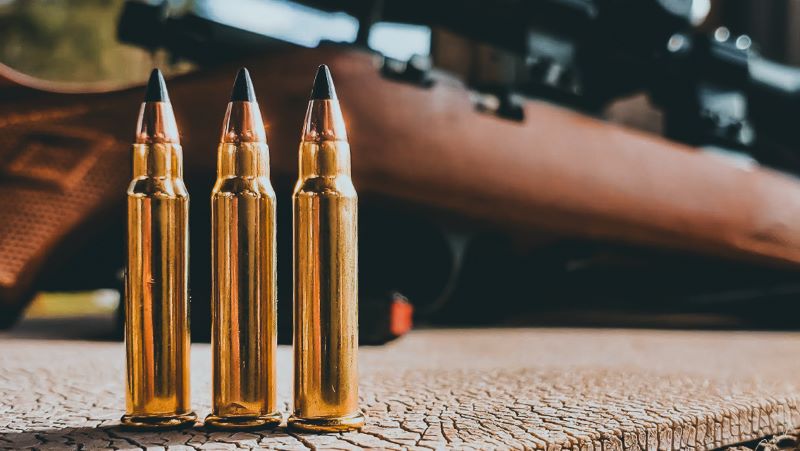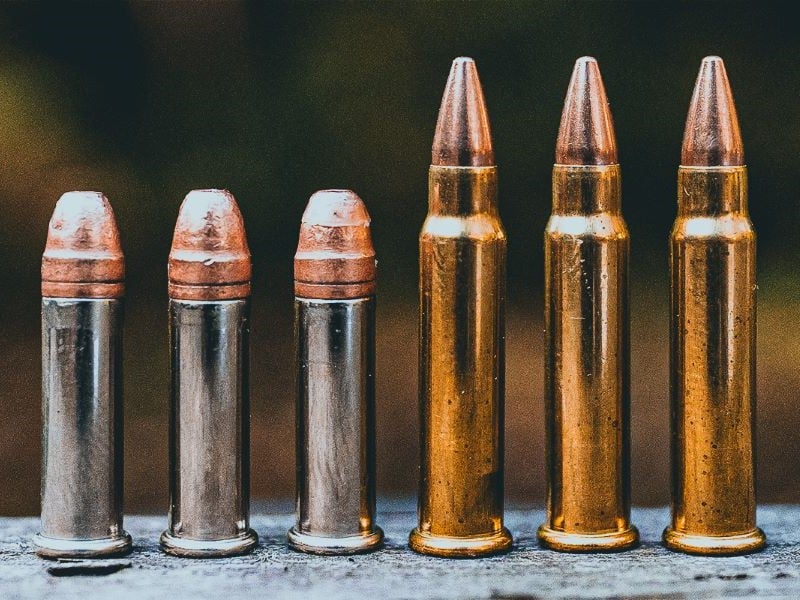During the last couple of major ammo famines, most of us noticed with dire that the shelves of gun stores were glaringly almost empty of ammunition. Almost empty.
In a few cases, very few calibers were usually on the shelf. Which calibers did people see? In my neck of the woods, one stood out time and time again; it was the .17 HMR. At the time, I knew very little about this caliber, but the fact was impressed upon me that it was readily available.
I really hate to use this word to describe a bullet. But dangit, the word just fits. This round looks…cute! Let’s take a look at what the .17 HMR brings to the table.

In The Beginning
Hornady developed the .17 HMR in 2002, and the HMR stands for Hornady Magnum Rimfire. Ruger and Marlin added their assistance as a collaboration to create the project. They developed the round by necking down a .22 Magnum casing to accept a .17 caliber (4.5 mm) projectile. One of the most common bullet weights encountered in this caliber is a 17-grain projectile. As the name implies, this cartridge is a rimfire.
The maximum internal pressure of the .17 HMR is around 26,000 pounds per square inch.
In short, the .17 HMR is a smaller, lighter round than the .22WMR and exhibits a higher velocity. Much higher, in fact.
Target Audience
The .17 HMR’s main target audience is hunters and target shooters. The fact that it has a higher velocity than other rimfire rounds and has better extended-range accuracy has endeared the round to some shooters. It seems to have given the rimfire market a shot in the arm, which never hurts.
Flavors
Projectiles for the .17 HMR come in a few flavors. As mentioned, the 17-grain projectile is very popular, but some bullet makers also have 15.5 and 20-grain rounds. A reasonable velocity to expect from the 17-grain projectile is around 2,550 to 2,650 feet per second. For a rimfire, that is screaming velocity, and it pulls ahead of other rimfire rounds in that department.
With a 100-yard zero, the 17-grain bullet drops around nine inches at 200 yards. Generally speaking, this bullet maxes out at about 250 yards. Most people would assume that such a light bullet would be adversely affected by wind, but it actually does better than most expect. The speed, combined with the aerodynamics of the projectile, helps the tiny bullet to buck the wind fairly well. That’s not to say it’s immune to the wind, just that it handles it far better than most would expect.
Hornady has a few loads out for the .17 HMR, and from all reports, they are excellent rounds. The 17-grain round (Hornady Varmint Express V-Max) is good out to around 200 yards, enjoying excellent accuracy. And that’s another point: the ammo for this round is not too highly-priced; this round costs $15.99 for 50 rounds as this is written. It’s certainly more than .22 Long Rifle, but far less expensive than most other hunting rounds these days.

Hornady’s Varmint Express 15.5 grain NTX is another effective round, priced at $19.99 for a box of 50. Hornady’s 20-grain XTP (Extreme Terminal Performance) offers yet another bullet weight to try and retails for $15.99/box of 50 as this is written.
A number of my friends have used all of these bullets and they’ve reported very favorably on their performance.
The most common game animals for the .17 seem to be squirrels, raccoons, rabbits, prairie dogs, groundhogs, possums, and other smallish animals/pests. As well, some hunters also use it on bobcats, coyotes, and foxes. Some turkey hunters also use it on this quarry to good effect. Coyote and bobcat hunters like the aspect that the .17 HMR doesn’t punch huge holes in the animals’ pelts.
Comparisons
The .22 Long Rifle
Since it’s a rimfire, it’s completely fair to compare the .17 HMR to other rimfire cartridges. The most popular being the .22 Long Rifle.
The .22 Long Rifle is just about the most popular round in existence, generally speaking, having been introduced in 1887. It’s great for target, plinking, and hunting applications. It’s cheap, has low recoil, good accuracy, and low recoil, plus low muzzle blast. There is a wide range of bullet weights and configurations for the .22 LR. A 36-grain hollow point round might have a velocity of around 1,260 feet per second.

When the right bullet is used, the .22LR is effective on much of the same game that the .17 HMR is. However, it’s effective at a shorter distance because the .22LR is slower than the .17 HMR.
Because of the variety of ammo available for it, the .22 LR is a great host for sound suppressors. It can be readily had with subsonic ammunition.
Another area where the .22LR shines is in price and availability. For the most part, it’s inexpensive. It’s also normally found everywhere that ammo is sold. Shooters can lay up thousands of rounds of .22 without going broke. And speaking of availability, firearms chambered for the .22 are also amazingly available.
Compared to the .22LR, the .17 HMR leaves it in the dust as far as velocity is concerned. Even with a hollow point round, the .22LR is not known for its explosive expansion. The .17 HMR, on the other hand, definitely explodes, assuming the rounds being used are intended for such a purpose.
That velocity also helps the .17 to shoot much flatter than the .22LR. The .22 is effective on small game out to around 75 yards, whereas the .17 is effective out to approximately 200+ yards.
At The Range And In The Field
It’s a great round for those who are starting out shooting because there’s practically no recoil at all. That lack of recoil and muzzle blast can help prevent shooters from developing a flinch. But it’s not only new shooters who enjoy the .17 HMR; experienced shooters can see the advantages too. To top it off, the extreme accuracy of this round endears it to most shooters who use it.
I have several friends who are quite enamored with the .17 HMR. All report astounding accuracy with it. Most say it will reach out to at least 200 yards easily. And there’s no question as to its effectiveness on small, furry pests.
Parting Shots
Within 75 yards, the .22 Long Rifle has a lot going for it, and the .17 HMR might not have a massive advantage over it. The .22LR’s availability, choice of bullet weights and types, choice of firearms, and very low cost make it a very wise choice. Especially if you want to shoot a large volume of .22 ammo in target shooting sessions. Plus, there are quality semi-autos, such as the Ruger 10/22, that reliably shoot the .22LR.

However, for longer distances, such as out to 250 yards, the .17 HMR pulls ahead in the power and performance category. And it’s not like the ammunition for the .17 HMR is overly expensive, either. There are a good number of firearms chambered for the .17 HMR, though fewer to choose from than the .22LR.
One big plus for the .17 HMR is that my area had tons of it available during ammo shortages. While it’s not the ultimate self-defense caliber of choice if it’s what is available… Add to that the attractive aspect that it has low recoil and report, so new shooters will love it. For hunting small game, it is stellar for survival situations.
All in all, the .17 HMR looks like an affordable, realistic small game and target cartridge. What’s your take on it?


